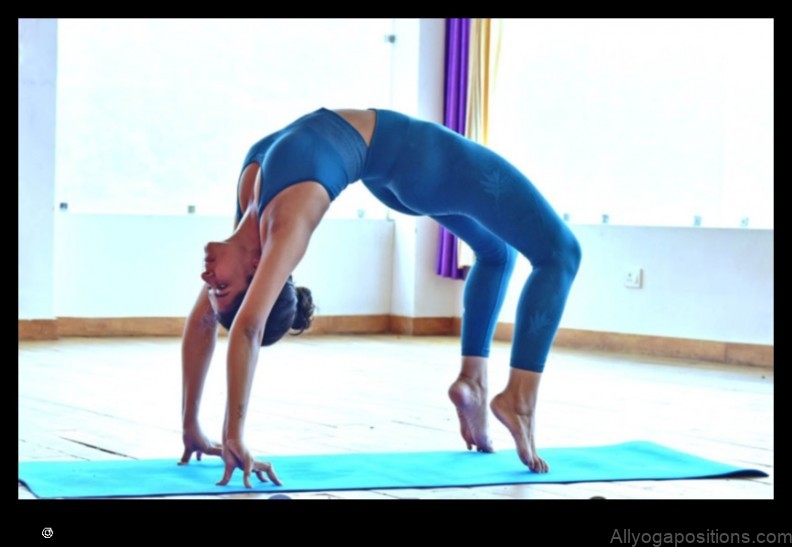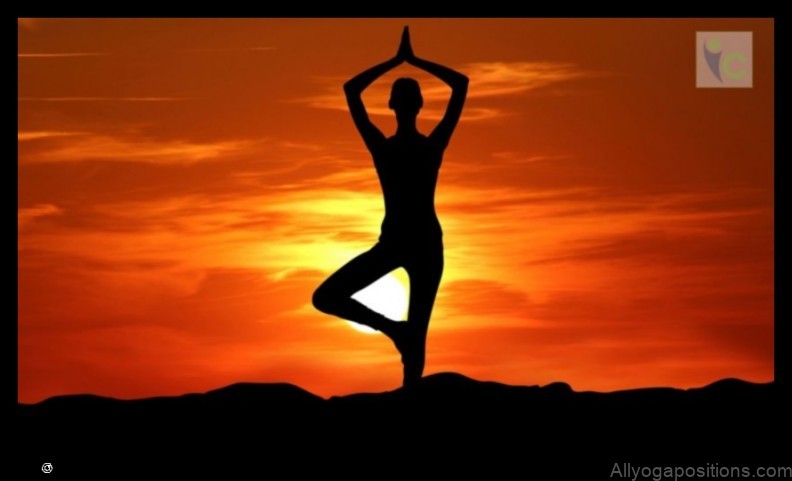
Yoga Poses
Yoga is a mind and body practice with a 5,000-year history in ancient Indian philosophy.
It’s a holistic system that incorporates physical postures, breathing exercises, and meditation or relaxation.
Yoga is designed to promote overall health and well-being.
It can help to improve flexibility, strength, balance, and coordination.
It can also reduce stress, anxiety, and depression.
There are many different types of yoga, each with its own unique benefits.
Some of the most popular types of yoga include Hatha yoga, Vinyasa yoga, Bikram yoga, and Yin yoga.

Benefits of Yoga for Beginners
Yoga can offer a number of benefits for beginners, including:
- Improved flexibility
- Increased strength
- Better balance
- Improved coordination
- Reduced stress
- Reduced anxiety
- Improved mood
- Increased energy
How to Do Yoga at Home
Yoga can be easily practiced at home.
Here are a few tips for getting started:
- Find a quiet place where you can practice yoga without distractions.
- Wear comfortable clothing that you can move around in easily.
- Start with a few simple poses and gradually increase the difficulty as you get more comfortable.
- Listen to your body and don’t push yourself too hard.
- Practice yoga regularly to see the benefits.

Common Yoga Poses for Beginners
Here are some common yoga poses that are good for beginners:
- Standing Forward Fold
- Child’s Pose
- Warrior I Pose
- Warrior II Pose
- Downward Dog Pose
- Bridge Pose
- Seated Twist Pose
- Savasana (Corpse Pose)

Yoga Poses for Flexibility
Yoga can help to improve flexibility by stretching the muscles and joints.
Here are some yoga poses that are good for flexibility:
- Pigeon Pose
- Cobra Pose
- Downward Dog Pose
- Seated Forward Fold
- Standing Forward Fold
- Child’s Pose
- Bridge Pose
- Half Splits
Yoga Poses for Strength
Yoga can help to build strength by strengthening the muscles and bones.
Here are some yoga poses that are good for strength:
- Warrior I Pose
- Warrior II Pose
- Downward Dog Pose
- Plank Pose
- Chaturanga Dandasana (Four-Limbed Staff Pose)
- Upward Dog Pose
- Bridge Pose
- Tripod Headstand
Yoga Poses for Balance
Yoga can help to improve balance by challenging the body to stay in a stable position.
Here are some yoga poses that are good for balance:
- Tree Pose
- Half Moon Pose
- Crow Pose
- Standing One-Legged Forward Fold
- Warrior III Pose
- Bridge Pose
- Half Splits
- Headstand
| Topic | Features |
|---|---|
| Yoga Poses | – Instructions on how to do specific yoga poses |
| Benefits of yoga | – Information on the benefits of doing yoga |
| Types of yoga | – Different types of yoga and their benefits |
| Yoga for beginners | – Tips for beginners who are starting yoga |
| Yoga poses for weight loss | – Poses that can help you lose weight |
II. Benefits of yoga for beginners
Yoga is a mind and body practice that has been around for thousands of years. It is a holistic practice that can help to improve your physical, mental, and emotional health.
There are many benefits of yoga for beginners, including:
- Improved flexibility
- Increased strength
- Better balance
- Reduced stress
- Improved sleep
- Reduced pain
- Improved mood
- Enhanced self-awareness
If you are new to yoga, it is important to start slowly and gradually increase the intensity of your practice as you become more comfortable. You should also listen to your body and avoid pushing yourself too hard.
Yoga is a safe and effective way to improve your overall health and well-being. If you are interested in learning more about yoga, there are many resources available online and in your community.
III. How to do yoga at home
Yoga is a great way to improve your physical and mental health. It can help you to reduce stress, improve your flexibility, and increase your strength. You can do yoga at home without any special equipment. Just follow these steps:
- Find a quiet place where you can practice yoga.
- Wear comfortable clothing that you can move around in easily.
- Start by doing some basic stretches to warm up your body.
- Follow a yoga video or class to learn the basics of yoga poses.
- Practice yoga regularly to see the benefits.
Here are some tips for doing yoga at home:
- Start slowly and gradually increase the intensity of your practice over time.
- Listen to your body and stop if you feel pain.
- Make sure to breathe deeply and relax your mind during your practice.
- Have fun!
Yoga is a great way to improve your health and well-being. By following these tips, you can safely and effectively practice yoga at home.
IV. Common yoga poses for beginners
Here are some common yoga poses for beginners:
- Standing forward bend
- Downward-facing dog
- Child’s pose
- Cat-cow pose
- Warrior I pose
- Warrior II pose
- Triangle pose
- Half moon pose
- Bridge pose
These poses are all relatively simple and can be modified to make them easier or more challenging. They are a great way to get started with yoga and to improve your flexibility, strength, and balance.
V. Yoga poses for flexibility
Yoga poses for flexibility can help to improve your range of motion and make you more agile. They can also help to relieve tension and stress. Some of the most common yoga poses for flexibility include:
- Standing forward bend
- Seated forward bend
- Child’s pose
- Downward-facing dog
- Pigeon pose
- Bridge pose
- Cobra pose
- Half-moon pose
- Warrior II pose
When practicing yoga poses for flexibility, it is important to listen to your body and not to push yourself too hard. If you feel pain, stop and rest. You should also gradually increase the amount of time you spend in each pose.
Yoga poses for flexibility can be practiced as part of a regular yoga practice or as a stand-alone exercise routine. They are a great way to improve your overall health and well-being.
6. Yoga poses for weight loss
Yoga is a great way to improve your overall health and well-being, and it can also be helpful for weight loss. Yoga can help you to burn calories, build muscle, and improve your flexibility. It can also help you to reduce stress and anxiety, which can lead to weight gain.
There are many different yoga poses that can help you to burn calories and build muscle. Some of the best poses for weight loss include:
- Sun salutations
- Chaturanga dandasana (four-limbed staff pose)
- Upward-facing dog
- Downward-facing dog
- Warrior poses
- Plank pose
- Bridge pose
- Seated forward bend
- Supta virasana (reclining hero pose)
If you are new to yoga, it is important to start slowly and gradually increase the intensity of your practice. You should also listen to your body and stop if you feel pain.
Yoga is a great way to improve your overall health and well-being, and it can also be a helpful tool for weight loss. If you are looking for a way to lose weight, consider adding yoga to your fitness routine.
VII. Yoga poses for balance
Yoga poses for balance can help to improve your overall coordination and stability. They can also help to reduce stress and anxiety, and to improve your mood.
Some of the most common yoga poses for balance include:
- Tree pose
- Warrior III pose
- Half moon pose
- Standing forward bend
- Savasana
When practicing yoga poses for balance, it is important to listen to your body and to avoid pushing yourself too hard. If you feel dizzy or lightheaded, stop the pose and rest.
Yoga poses for balance can be practiced at any time of day, but they are often done at the end of a yoga session. You can also practice them on their own, as part of your daily routine.
Yoga poses for relaxation
Yoga poses for relaxation can help to reduce stress, improve sleep, and increase energy levels. Some of the best yoga poses for relaxation include:
- Child’s pose
- Corpse pose
- Forward fold
- Seated forward bend
- Savasana
These poses can be done at any time of day, but they are particularly helpful before bed or when you are feeling stressed or anxious.
To do child’s pose, kneel on the floor with your toes together and your knees hip-width apart. Sit back on your heels and extend your arms forward, placing your palms on the floor in front of you. Relax your head and neck and let your spine lengthen. Hold the pose for 5-10 breaths.
To do corpse pose, lie flat on your back with your legs extended and your arms at your sides. Close your eyes and relax your entire body. Allow your mind to wander and let go of any thoughts or worries. Hold the pose for 5-10 minutes.
To do forward fold, stand with your feet hip-width apart. Bend forward from your hips and reach your arms toward the floor. Keep your back straight and your knees slightly bent. Hold the pose for 5-10 breaths.
To do seated forward bend, sit on the floor with your legs extended in front of you. Bend forward from your hips and reach your arms toward your toes. Keep your back straight and your knees slightly bent. Hold the pose for 5-10 breaths.
To do savasana, lie flat on your back with your legs extended and your arms at your sides. Close your eyes and relax your entire body. Allow your mind to wander and let go of any thoughts or worries. Hold the pose for 5-10 minutes.
IX. Yoga poses for stress relief
Yoga is a mind and body practice that has been shown to have many benefits, including stress relief. When you practice yoga, you focus on your breath and your body movements, which can help to quiet your mind and reduce stress levels. Yoga can also help to improve your flexibility, strength, and balance.
There are many different yoga poses that can help to relieve stress. Some of the most common poses include:
- Child’s pose
- Downward-facing dog
- Bridge pose
- Seated forward bend
- Savasana (Corpse pose)
When you practice yoga, it is important to listen to your body and do what feels comfortable. If you are feeling pain or discomfort in any pose, stop and come out of the pose.
Yoga can be a great way to relieve stress and improve your overall well-being. If you are looking for a way to reduce stress, consider adding yoga to your daily routine.
FAQ
Q: What is yoga?
A: Yoga is a mind and body practice with a 5,000-year history in ancient Indian philosophy.
It involves physical postures, breathing exercises, and meditation or relaxation.
Q: What are the benefits of yoga?
A: Yoga has been shown to have many benefits for both physical and mental health.
These include improved flexibility, strength, balance, and coordination.
Yoga can also help to reduce stress, anxiety, and depression.
Q: What are the different types of yoga?
A: There are many different types of yoga, each with its own unique focus and style.
Some of the most popular types of yoga include Hatha yoga, Vinyasa yoga, Bikram yoga, and Yin yoga.
Table of Contents
Maybe You Like Them Too
- Yoga for Healthy Joints Move, Meditate, and Relieve Pain
- Unlocking Creativity How Meditation Can Help You Tap Into Your Creative Potential
- Empowerment Euphoria Yoga for Inner Strength Find Your Inner Strength and Shine Through Yoga
- Unlock Your Inner Strength with Yoga
- Empower Your Flow Yoga for Strength and Flexibility
